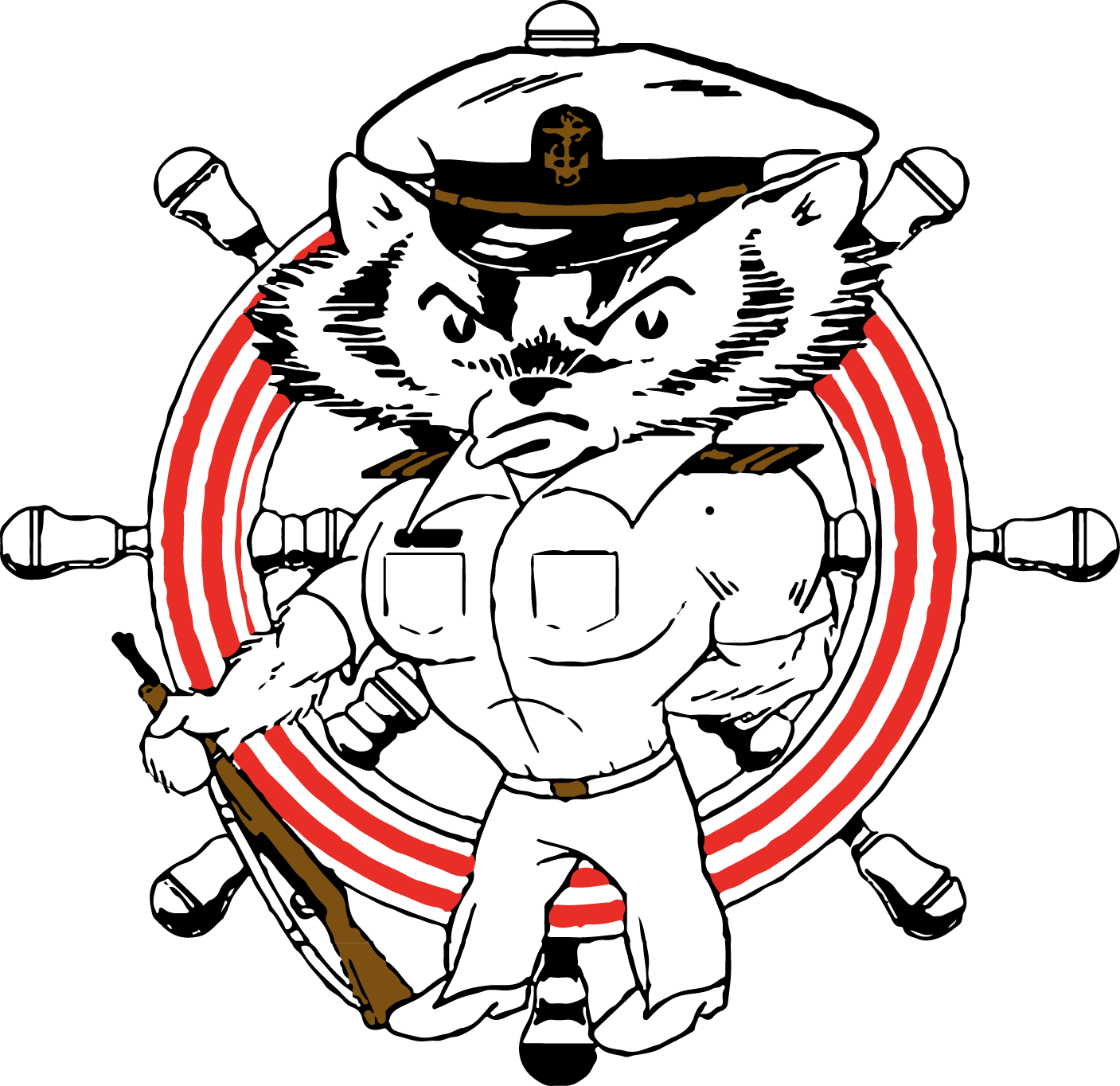1946 and Further Reading
Circa 1946, servicemen return to San Francisco aboard USS RANDALL (APA 224) in Operation MAGIC CARPET
February 1946
On 27 February 1946, the new NROTC Unit conducted its first commissioning ceremony for Navy line officers. In ceremonies conducted in the Union Theater, Professor William H. Kiekhofer gave an inspiring and spirited address, and Captain Hurff presented commissions to 71 V-12 graduates.
ROTC Students in the Rathskeller
The V-12 Program Ends
The 1945-1946 academic year witnessed the end of V-12 on the Madison campus. With the initiation of a Naval ROTC unit on 1 November 1945, the remaining V-12 students reported to the newly arrived Professor of Naval Science and Tactics, Captain J.E. Hurff. Several students came to Madison from campuses where Navy programs were terminating. The V-12 Medical Unit ceased existence in February 1946. Consistent with the general demobilization effort, Navy undergraduate numbers declined rapidly so that by the end of the second semester, only 156 V-12/NROTC students were still actively enrolled. Active-duty V-12 formally ended on the campus on 1 July 1946. Despite the failure of the university to receive a V-12 basic program and allowing for the trauma that preceded authorization of Wisconsin's engineering and medical units, these programs clearly met Clarence Dykstra's objectives.
July 1946
On 1 July 1946, the NROTC Program went off active duty and became available to civilian students. By that time, opposition from universities and colleges to the 36-credit naval science curriculum had forced the Navy to compromise and reduce the program to
24-credit hours for all NROTC institutions. Additionally, by that time, the Navy was proposing that students enter NROTC from throughout the schools and colleges of the University, not merely from engineering, and pursue established degrees according to their own choices. Therefore, the Bachelor of Naval Science degree was an expedient for students finishing the Navy program in the year or two after the war's end.
August to Fall 1946
On 5 August 1946, the faculty approved the Bachelor of Naval Science Degrees in the School of Commerce and the College of Agriculture. The same day, the Regents approved these actions, and those made the previous October, regarding the Bachelor of Naval Science degree in the College of Engineering. In December, the faculty of the College of Letters and Science approved awarding the following degrees with 124 credits, including 24 credits of naval science: BA General (any major), BS General (any major), BS (Naval Science). Thus, by the end of 1946, the University had made NROTC a full partner in its post-war academic programs.
The University's intention to build a new naval building died a slow, quiet death. In an article about the new NROTC Unit, the April issue of Wisconsin Alumnus stated, “There are at present 173 enrolled in the Navy Department at the University of Wisconsin. ...The instruction is presented at a temporary Naval Armory at 1610 University Ave. A new armory is planned, but the critical need of materials for housing has postponed it until a later date.”
At the turn of the 20th Century, the Blackhawk building was still serving as a “temporary” naval armory. Having so vigorously decried the university's commitment to building a new armory, William T. Evjue, with that at least, would have been delighted.
John Washbush, CDR, USNR (Ret.)
The Association owes many thanks to John Washbush for his research and writing concerning our Naval ROTC Unit at 1610 University Avenue. John is a 1964 graduate, served as the XO (and for a period CO) of our Unit, and was an officer on the Board of the Association when it was established in 1987. He has since served in multiple positions with the Board over the past 34 years and was designated a Distinguished Alumni. The material in this website section was drawn from his paper “The Campus and the Navy in World War II: Naval Training at the University of Wisconsin, 1939 - 1946” 1986 (Revised, 2004). John’s research paper can be downloaded below.




